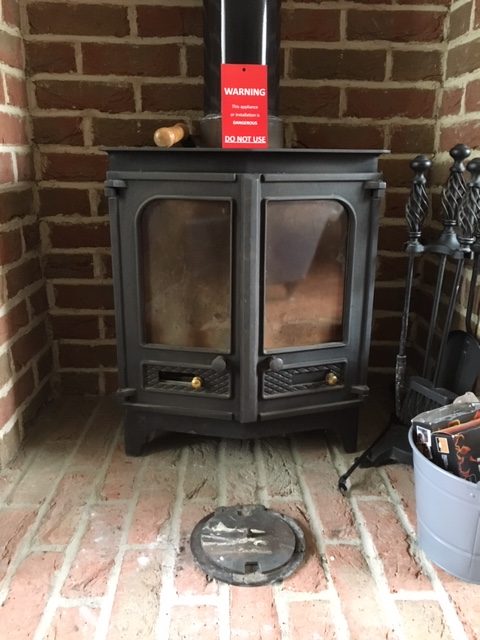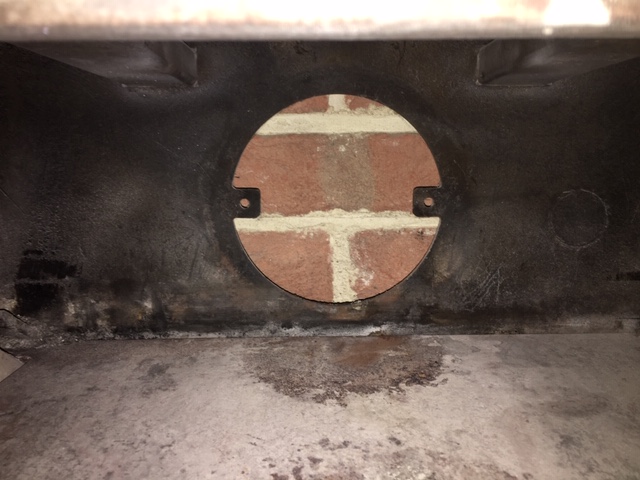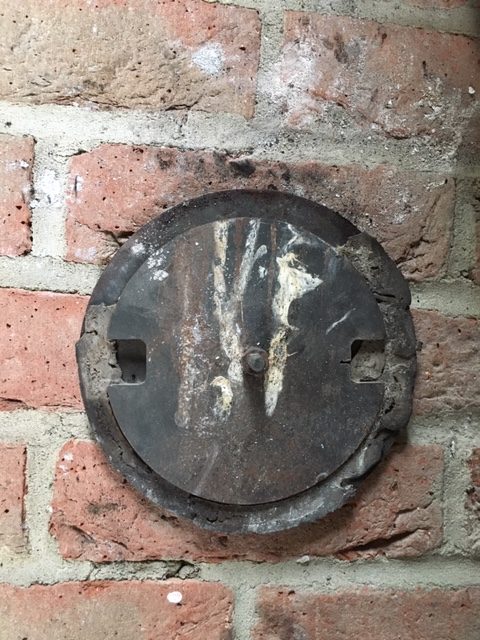To be honest it is rather a rare event to find an unsafe stove or installation and when it does occur it is usually because the installation or appliance are old and some of the component parts have degraded over time and become unsafe. It is even rarer to find a dangerous system because it has been installed incorrectly by an amateur or cowboy builder. In this instance it was the former reason as opposed to the latter, where a component part had simply deteriorated over time rendering the appliance unsafe.
Here, the appliance was a Charnwood Country 6 Wood-burning Stove which was one of two stoves installed in a rental property. Upon dropping the baffle to sweep the flue I was surprised to see exposed brick work instead of the back of the fire box – I realized that the rear blanking plate was missing from the back of the stove and found that it had actually dropped into the stove when I removed the baffle (See Photographs). The blanking plate is the circular metal plate which is used to cover an unused flue outlet from the appliance, i.e. in this instance the stove was flued out of the top of the appliance, so the blanking plate was being used to cover the unused rear outlet. The blanking plate seals the stove preventing noxious combustion gasses such as carbon monoxide entering the room and presenting a risk to life. Upon examining the blocking plate, it was clear to see why it had failed, both the retaining bolts had corroded away causing it to fall into the stove. I could also see that at some stage someone had unsuccessfully attempted to re-fix to the stove it using fire-cement.
Clearly, a stove in this condition would be dangerous to used, primarily because when in use carbon monoxide would be free to leak into the room causing a danger to life. In these instances, there is a set procedure to follow as laid down by the Guild of Master Chimney Sweeps, of which I am a member. I diplomatically point out the defect(s) to the customer, explaining why they are dangerous and how to go about rectifying them. I complete a Guild of Master Chimney Sweeps Warning Notice form listing the defects and how they should be resolved; whilst additionally warning the customer not to use the appliance in its present condition. I then ask the customer to sign the Warning Notice form and provide them with a copy. I next complete a red Warning Notice which I place on the appliance indicating that the appliance should not be used and then I take photographs of the appliance and the defects for record purposes. In this way I document what I have found and what is required to correct the defect; keeping the customer safe from harm and pointing them in the right direction to affect the necessary repairs.





 My name is Paddy McKeown, I am a retired police officer (Detective Sergeant – Metropolitan Police), turned chimney sweep. I have completed training with ‘The Guild of Master Chimney Sweeps’, and Rod Tech UK (Power Sweeping).
My name is Paddy McKeown, I am a retired police officer (Detective Sergeant – Metropolitan Police), turned chimney sweep. I have completed training with ‘The Guild of Master Chimney Sweeps’, and Rod Tech UK (Power Sweeping).




Comments are closed.